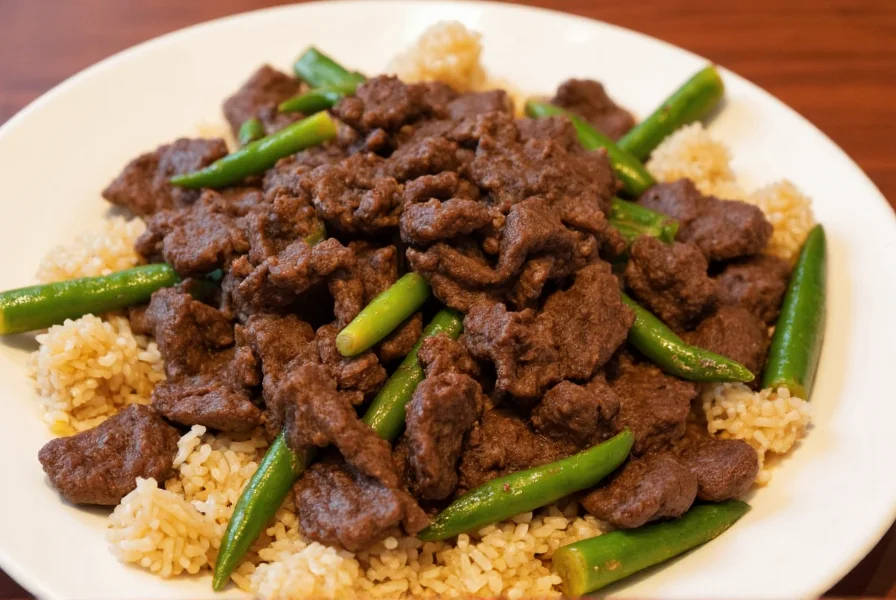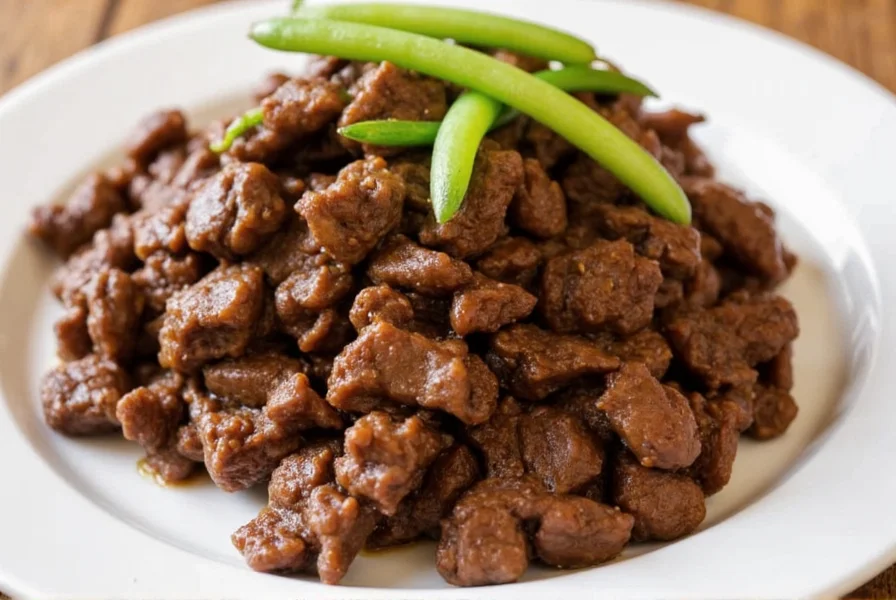Black pepper beef stands as one of the most beloved dishes in Chinese-American cuisine, yet its roots trace back to traditional Cantonese cooking. Unlike many Westernized Chinese dishes, this recipe maintains its authentic character while adapting to global palates. The magic happens when freshly cracked black pepper meets high-heat wok cooking, creating a complex flavor profile that elevates simple ingredients into something extraordinary.
The Origins of Black Pepper Beef
While often associated with Chinese-American restaurants, black pepper beef actually has deep roots in Guangdong province cuisine. Chefs in southern China developed this preparation method to showcase premium ingredients without overwhelming them. The dish gained international popularity through Chinese immigrants who adapted it using locally available ingredients while maintaining the essential flavor balance.
Essential Ingredients and Their Roles
The success of black pepper beef hinges on ingredient quality and proper technique. Here's what makes each component crucial:
| Ingredient | Function | Quality Tips |
|---|---|---|
| Flank steak or sirloin | Provides tender texture when sliced properly against the grain | Choose well-marbled cuts, slightly frozen for easier slicing |
| Freshly cracked black pepper | Creates complex floral, piney notes when heated | Use Tellicherry or Lampong peppercorns, crack just before cooking |
| Oyster sauce | Adds umami depth and glossy texture | Lee Kum Kee is reliable, but check for MSG content if sensitive |
| Rice wine or shaoxing | De-glazes wok and adds subtle sweetness | Never substitute with cooking wine containing salt |
Step-by-Step Cooking Method
Mastering black pepper beef requires attention to timing and temperature. Follow these steps for restaurant-quality results at home:
- Prepare the beef: Slice 1½ pounds of partially frozen flank steak against the grain into ¼-inch thick pieces. Marinate with 1 tablespoon soy sauce, 1 teaspoon cornstarch, and 1 teaspoon sesame oil for 20 minutes.
- Create the sauce: Whisk together 3 tablespoons oyster sauce, 1½ tablespoons soy sauce, 1 tablespoon rice wine, 1 teaspoon sugar, and ¼ cup beef broth. Set aside.
- Wok preparation: Heat 2 tablespoons peanut oil in a wok or heavy skillet over maximum heat until smoking. Add 2 tablespoons freshly cracked black pepper and 4 minced garlic cloves, stir-frying for 15 seconds until fragrant but not burnt.
- Cook the beef: Add marinated beef in a single layer (work in batches if needed). Sear without stirring for 1 minute, then toss constantly for another 1-2 minutes until just browned but still slightly pink inside.
- Finish the dish: Pour sauce over beef, stirring constantly until liquid thickens and coats the meat (about 30 seconds). Remove from heat immediately to prevent overcooking.
Avoiding Common Mistakes
Many home cooks encounter issues with black pepper beef. Here's how to prevent the most frequent problems:
- Tough meat: Always slice against the grain and avoid overcooking. The beef should reach medium-rare (130-135°F) as it will continue cooking off-heat.
- Muddy flavors: Use freshly cracked pepper rather than pre-ground. Pre-ground pepper loses volatile compounds that create the distinctive aroma.
- Watery sauce: Ensure your wok is properly heated before adding sauce. The high temperature causes instant reduction and proper thickening.
- Bitterness: Never burn the garlic or pepper. Remove aromatics from direct heat if they start browning too quickly.
Regional Variations Worth Trying
Chefs around the world have adapted black pepper beef to local tastes while maintaining its essential character:
- Hong Kong style: Features a thicker, glossier sauce with additional cornstarch and sometimes a touch of tomato paste for complexity.
- Singaporean version: Incorporates a small amount of dark soy sauce for deeper color and adds bell peppers for texture contrast.
- Western adaptation: Often includes onions and mushrooms, with slightly sweeter sauce profile to match local preferences.
- Modern fusion: Some chefs add a splash of brandy or cognac to the sauce for additional depth, particularly in upscale restaurants.

Serving and Pairing Recommendations
For the most authentic experience, serve black pepper beef immediately after cooking while the beef remains tender and the sauce glossy. Traditional pairings include:
- Steamed jasmine rice (never cold rice, which indicates pre-prepared dishes)
- Simple vegetable side like blanched bok choy or gai lan
- A light broth-based soup to balance the dish's intensity
- For beverage pairings, consider a crisp lager or light-bodied red wine like Pinot Noir
When plating, arrange the beef in a mound with sauce visibly coating each piece. The ideal black pepper beef should glisten without pooling liquid on the plate—a sign of proper sauce reduction and cornstarch usage.
Storage and Reheating Guidelines
While best enjoyed fresh, properly stored black pepper beef maintains quality for 2-3 days:
- Cool completely before refrigerating in an airtight container
- Reheat gently in a skillet with 1-2 teaspoons of broth or water to restore moisture
- Avoid microwave reheating, which makes beef tough and sauce watery
- Never freeze black pepper beef—the texture of the beef deteriorates significantly
Frequently Asked Questions
What's the best cut of beef for black pepper beef?
Flank steak remains the traditional choice for black pepper beef due to its rich beefy flavor and ability to stay tender when sliced properly against the grain. For more luxurious preparation, filet mignon offers exceptional tenderness but at higher cost. Avoid tough cuts like chuck that won't benefit from the quick cooking method.
Can I make black pepper beef without oyster sauce?
Yes, though the flavor profile will differ. For vegetarian versions, use mushroom sauce instead of oyster sauce. For seafood allergies, try a combination of soy sauce, hoisin sauce, and a touch of fish sauce (if not vegetarian). The key is maintaining the umami depth that oyster sauce provides.
Why does my black pepper beef turn out tough?
Tough black pepper beef usually results from either overcooking or improper slicing. Always slice against the grain into thin pieces, and cook quickly over high heat—no more than 2-3 minutes total. The beef should remain slightly pink inside when removed from heat, as carryover cooking will finish the process.
How can I make my black pepper sauce more authentic?
Authentic black pepper sauce requires freshly cracked Tellicherry peppercorns, which have more complex floral notes than standard black pepper. Toast the peppercorns lightly before cracking, and use at least 2 tablespoons for a standard recipe. The sauce should have balanced saltiness from quality oyster sauce without being overly sweet.











 浙公网安备
33010002000092号
浙公网安备
33010002000092号 浙B2-20120091-4
浙B2-20120091-4